#FORTRAN
Explore tagged Tumblr posts
Text
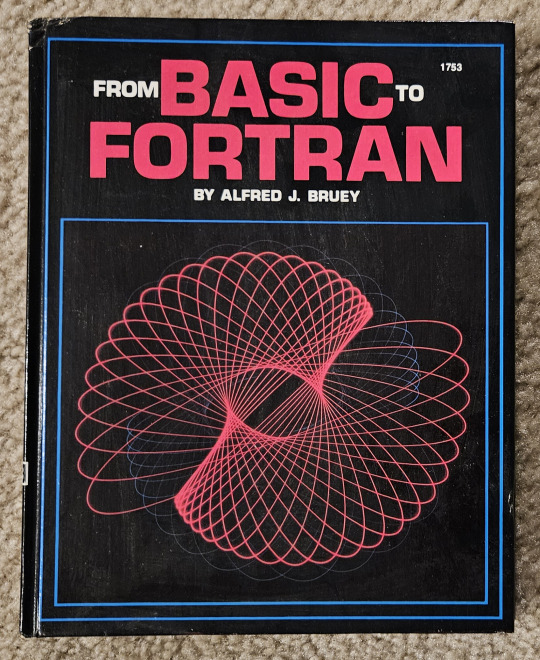
From BASIC to Fortran Alfred J. Bruey 1984
446 notes
·
View notes
Text
#snoopy#calendar#2025#dot-matrix#because#I don't have a Line Printer#FORTRAN#1969#I started printing one per year in 2015#9 years so far
88 notes
·
View notes
Text


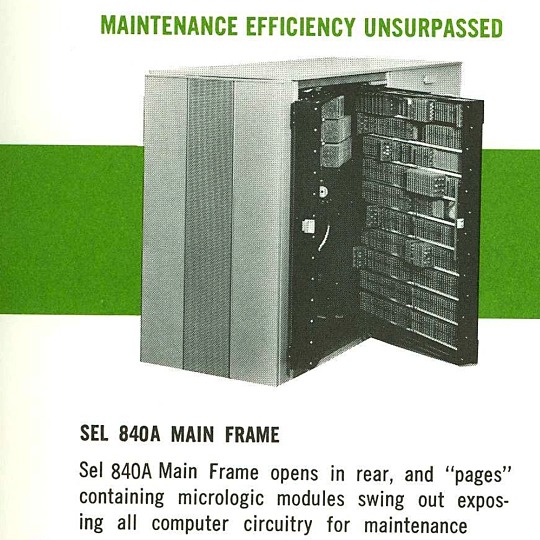
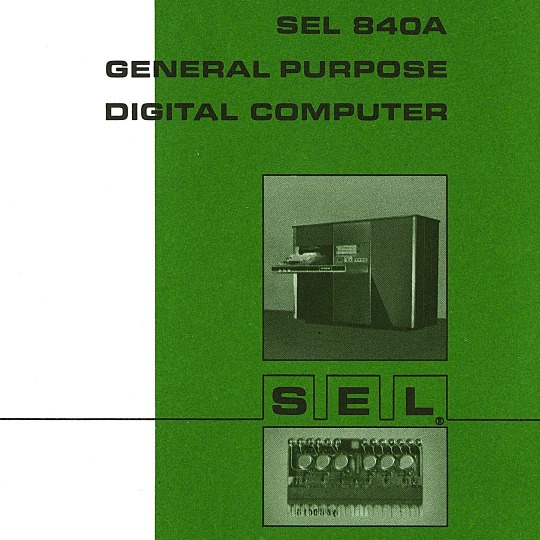
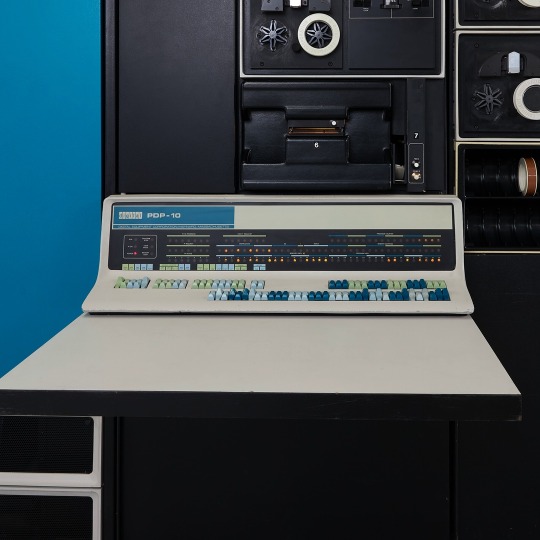

🎄💾🗓️ Day 11: Retrocomputing Advent Calendar - The SEL 840A🎄💾🗓️
Systems Engineering Laboratories (SEL) introduced the SEL 840A in 1965. This is a deep cut folks, buckle in. It was designed as a high-performance, 24-bit general-purpose digital computer, particularly well-suited for scientific and industrial real-time applications.
Notable for using silicon monolithic integrated circuits and a modular architecture. Supported advanced computation with features like concurrent floating-point arithmetic via an optional Extended Arithmetic Unit (EAU), which allowed independent arithmetic processing in single or double precision. With a core memory cycle time of 1.75 microseconds and a capacity of up to 32,768 directly addressable words, the SEL 840A had impressive computational speed and versatility for its time.
Its instruction set covered arithmetic operations, branching, and program control. The computer had fairly robust I/O capabilities, supporting up to 128 input/output units and optional block transfer control for high-speed data movement. SEL 840A had real-time applications, such as data acquisition, industrial automation, and control systems, with features like multi-level priority interrupts and a real-time clock with millisecond resolution.
Software support included a FORTRAN IV compiler, mnemonic assembler, and a library of scientific subroutines, making it accessible for scientific and engineering use. The operator’s console provided immediate access to registers, control functions, and user interaction! Designed to be maintained, its modular design had serviceability you do often not see today, with swing-out circuit pages and accessible test points.
And here's a personal… personal computer history from Adafruit team member, Dan…
== The first computer I used was an SEL-840A, PDF:
I learned Fortran on it in eight grade, in 1970. It was at Oak Ridge National Laboratory, where my parents worked, and was used to take data from cyclotron experiments and perform calculations. I later patched the Fortran compiler on it to take single-quoted strings, like 'HELLO', in Fortran FORMAT statements, instead of having to use Hollerith counts, like 5HHELLO.
In 1971-1972, in high school, I used a PDP-10 (model KA10) timesharing system, run by BOCES LIRICS on Long Island, NY, while we were there for one year on an exchange.
This is the front panel of the actual computer I used. I worked at the computer center in the summer. I know the fellow in the picture: he was an older high school student at the time.
The first "personal" computers I used were Xerox Alto, Xerox Dorado, Xerox Dandelion (Xerox Star 8010), Apple Lisa, and Apple Mac, and an original IBM PC. Later I used DEC VAXstations.
Dan kinda wins the first computer contest if there was one… Have first computer memories? Post’em up in the comments, or post yours on socialz’ and tag them #firstcomputer #retrocomputing – See you back here tomorrow!
#retrocomputing#firstcomputer#electronics#sel840a#1960scomputers#fortran#computinghistory#vintagecomputing#realtimecomputing#industrialautomation#siliconcircuits#modulararchitecture#floatingpointarithmetic#computerscience#fortrancode#corememory#oakridgenationallab#cyclotron#pdp10#xeroxalto#computermuseum#historyofcomputing#classiccomputing#nostalgictech#selcomputers#scientificcomputing#digitalhistory#engineeringmarvel#techthroughdecades#console
31 notes
·
View notes
Text
Hewlett-Packard, HP 9701 ...

Post #301: Hewlett-Packard, The HP 9701 Distributed System based on HP 2100 family, A Multi-Computer System, Programming with Fortran, Algol and Assembler, 1960s.
22 notes
·
View notes
Text
coloring is cool, trust

#my art :3#artists on tumblr#art artist#digital art#digital artist#samurai mario#super mario 14#fortran#bootleg#mario bootleg
14 notes
·
View notes
Text

(Fortran's Ancient Slot Machines)
In the ancient times of Mario's World, in ancient Chai Kingdom (long before Chai Kingdom became a part of Sarasaland), a wicked sorcerer and scientist known as "Fortran the Pionpi" created slot machines that can give one "Genie Powers". Fortran made two slot machines, he chose one slot machine to test on a caveman, "7 Grand Dad" he unfroze from ice to be a test subject. The slot machine magically fused with the caveman, thus the caveman was able to obtain a powerful genie form.
Fortran was pleased that the slot machines worked, he then used the second slot machine to turn himself into a genie. Genie Fortran in his genie form manipulated Genie 7 Grand Dad into doing evil. For 3 days, Fortran and 7 Grand Dad terrorized the ancient Chai Kingdom, however, 7 Grand Dad (despite being a caveman with limited intellect) saw the errors of his ways and felt bad for harming the people.
The Genie 7 Grand Dad wanted to instead save the people and fought the Genie Fortran for a short time. Unfortunately, Genie Fortran was able to magically revert 7 Grand Dad back into his true caveman form, thus 7 Grand Dad could not defeat Genie Fortran at the moment.
Eventually, 7 Grand Dad was able to access his Sub-Power Form, which made 7 Grand Dad's skin turn white, similar to his Genie form he could not access. Sub-Power 7 Grand Dad was even able to ask Master R.O.B. and the R.O.B. forces for help. 7 Grand Dad along with Master R.O.B. was able to eventually defeat Genie Fortran, causing Fortran to transform into his "dormant slot machine" form. The ancient people of Chai Kingdom gave praise to Master R.O.B. and the redeemed 7 Grand Dad for saving the Kingdom. The people got rid of the dormant slot machine of Fortran by dropping the slot machine into a deep pit within an abandoned temple in order to keep Fortran from terrorizing Chai Kingdom again.
More on the story of 7 Grand Dad will be added soon in the description.
(Fortran and 7 Grand Dad are not my characters, I must do research on what particular companies own them. Though, I heard that they are bootleg characters of Mario from Chinese companies. THIS WILL BE UPDATED)
#super mario#mario fanfic#meme#7 grand dad#fortran#pixel art#bootleg#ancient#mysterious#lore#obscure characters#dian shi ma li#slot machines#legendary#hero#villain#sarasaland#grand dad#fleenstones#vinesauce#chinese#caveman#push start to rich
16 notes
·
View notes
Text
Doing server maintenance tonight. At the end of the night I should have 7 different computers all hooked up together. Only problem is I have no idea what I want to do with all this computing power. I essentially have a cheap AMD Threadripper at my disposal.
Maybe I'll keep banging my head against Fortran to try and get my neural network to actually function. I'm running into problems with how to store the neural network data. Fortran doesn't have dynamically sized arrays so I have to either put in a big high rank array or have a bunch of smaller arrays with less manageable code.
5 notes
·
View notes
Text

Somewhate Olde Arte #37:
A great big load of various Mario & Sonic stuff.
Drawn in late 2020.
If you couldn't tell until now, the vast majority of these drawings were done from memory, without any reference art whatsover (there are a few exceptions though, like any Mega Man related drawings). This is why Scratch looks weird here. I'm not sure if the bald guy between the eggbotniks and Wario is meant to be Snively. I did draw a few Snivelys around this time, but this one looks more off model than I'd usually drawn him, so it could just be some random bald bloke.
#nintendo#super mario#mario#super mario bros#wario#luigi#sonic the hedgehog#sega#sonic#bootleg#eggman#dr eggman#ivo robotnik#scratch#scratch and grounder#aosth grounder#aosth scratch#aosth#weegee#fortran
8 notes
·
View notes
Text

Welcome to the 48th edition of the 2024 Richard Murray Newsletter.
topics
The eightieth of the Cento series. A cento is a poem made by an author from the lines of another author's work. In the series I place my cento and a link to the other authors poem.
Vase depicting the clouds from Journey To The South
COMMISSIONS - my craft or work for sale
DATES - astrology, astronomy, or other temporal notes, fortran, haka
IF YOU MADE IT THIS FAR : MP Hana-Rawhiti Maipi-Clarke starting a Haka!! ; Phonoliszt Violina ; How To Make Natural Plant Dye From Aloe Vera Leaves ; I made a Tesseract out of Gold Glass from JBArts ; Kobo live interview with Maria Fesz of overdrive
url https://rmnewsletter.substack.com/p/12012024-rmnewsletter
#rmnewsletter
#rmnewsletter#aalbc#rawhiti#kobo#hana#poetry#holland#gold#bishop#clarke#hddeviant#astrology#Violina#microcalligraphy#rmtja#hazel#poetryormore#maria#newsletter#Phonoliszt#epub#signature#audiobook#tesseract#commissions#thelastflail#richardmurrayhumblr#fortran#cento#astronomy
2 notes
·
View notes
Text

The Evolution of Programming Paradigms: Recursion’s Impact on Language Design
“Recursion, n. See Recursion.” -- Ambrose Bierce, The Devil’s Dictionary (1906-1911)
The roots of programming languages can be traced back to Alan Turing's groundbreaking work in the 1930s. Turing's vision of a universal computing machine, known as the Turing machine, laid the theoretical foundation for modern computing. His concept of a stack, although not explicitly named, was an integral part of his model for computation.
Turing's machine utilized an infinite tape divided into squares, with a read-write head that could move along the tape. This tape-based system exhibited stack-like behavior, where the squares represented elements of a stack, and the read-write head performed operations like pushing and popping data. Turing's work provided a theoretical framework that would later influence the design of programming languages and computer architectures.
In the 1950s, the development of high-level programming languages began to revolutionize the field of computer science. The introduction of FORTRAN (Formula Translation) in 1957 by John Backus and his team at IBM marked a significant milestone. FORTRAN was designed to simplify the programming process, allowing scientists and engineers to express mathematical formulas and algorithms more naturally.
Around the same time, Grace Hopper, a pioneering computer scientist, led the development of COBOL (Common Business-Oriented Language). COBOL aimed to address the needs of business applications, focusing on readability and English-like syntax. These early high-level languages introduced the concept of structured programming, where code was organized into blocks and subroutines, laying the groundwork for stack-based function calls.
As high-level languages gained popularity, the underlying computer architectures also evolved. James Hamblin's work on stack machines in the 1950s played a crucial role in the practical implementation of stacks in computer systems. Hamblin's stack machine, also known as a zero-address machine, utilized a central stack memory for storing intermediate results during computation.
Assembly language, a low-level programming language, was closely tied to the architecture of the underlying computer. It provided direct control over the machine's hardware, including the stack. Assembly language programs used stack-based instructions to manipulate data and manage subroutine calls, making it an essential tool for early computer programmers.
The development of ALGOL (Algorithmic Language) in the late 1950s and early 1960s was a significant step forward in programming language design. ALGOL was a collaborative effort by an international team, including Friedrich L. Bauer and Klaus Samelson, to create a language suitable for expressing algorithms and mathematical concepts.
Bauer and Samelson's work on ALGOL introduced the concept of recursive subroutines and the activation record stack. Recursive subroutines allowed functions to call themselves with different parameters, enabling the creation of elegant and powerful algorithms. The activation record stack, also known as the call stack, managed the execution of these recursive functions by storing information about each function call, such as local variables and return addresses.
ALGOL's structured approach to programming, combined with the activation record stack, set a new standard for language design. It influenced the development of subsequent languages like Pascal, C, and Java, which adopted stack-based function calls and structured programming paradigms.
The 1970s and 1980s witnessed the emergence of structured and object-oriented programming languages, further solidifying the role of stacks in computer science. Pascal, developed by Niklaus Wirth, built upon ALGOL's structured programming concepts and introduced more robust stack-based function calls.
The 1980s saw the rise of object-oriented programming with languages like C++ and Smalltalk. These languages introduced the concept of objects and classes, encapsulating data and behavior. The stack played a crucial role in managing object instances and method calls, ensuring proper memory allocation and deallocation.
Today, stacks continue to be an integral part of modern programming languages and paradigms. Languages like Java, Python, and C# utilize stacks implicitly for function calls and local variable management. The stack-based approach allows for efficient memory management and modular code organization.
Functional programming languages, such as Lisp and Haskell, also leverage stacks for managing function calls and recursion. These languages emphasize immutability and higher-order functions, making stacks an essential tool for implementing functional programming concepts.
Moreover, stacks are fundamental in the implementation of virtual machines and interpreters. Technologies like the Java Virtual Machine and the Python interpreter use stacks to manage the execution of bytecode or intermediate code, providing platform independence and efficient code execution.
The evolution of programming languages is deeply intertwined with the development and refinement of the stack. From Turing's theoretical foundations to the practical implementations of stack machines and the activation record stack, the stack has been a driving force in shaping the way we program computers.
How the stack got stacked (Kay Lack, September 2024)
youtube
Thursday, October 10, 2024
#turing#stack#programming languages#history#hamblin#bauer#samelson#recursion#evolution#fortran#cobol#algol#structured programming#object-oriented programming#presentation#ai assisted writing#Youtube#machine art
3 notes
·
View notes
Text
Cubic Limit (Video, Manfred Mohr, 1973-1974)
You can watch this early CGI short film here.


#internet archive#video#videos#short film#short films#fortran#early cgi#computer history#computing history#geometry#cube#cubes#1973#1974#1970s#70s
3 notes
·
View notes
Text
#mit#opencourseware#ocw#lesson#education#free#computational#methods#scientific#programming#fortran#c#c++#matlab#Mathematica
2 notes
·
View notes
Text
Fortran - Die erste wissenschaftliche Programmiersparche (1957 - 2024) ...
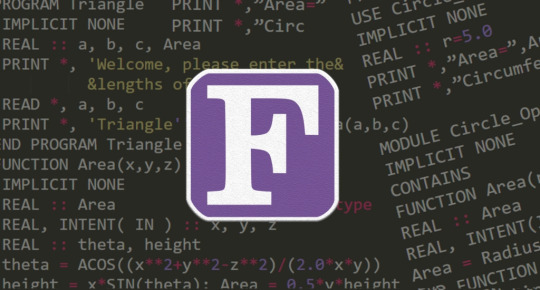
Quelle: www.peq42.com
https://datascientest.com/de/fortran-alles-ueber-die-erste-wissenschaftliche-programmiersprache
Post #307: DataScienTest, Alles über die erste wissenschaftliche Programmiersprache, 2024.
#programmieren#fortran#programmiersprache#retro programming#vintage programming#coding#history of coding#education#learning#teaching
4 notes
·
View notes
Text


mario bootlegs but WOKE??????
grand mom and fortrans
3 notes
·
View notes
Text
Fortrun? Fortran?

NO WAY
3 notes
·
View notes
